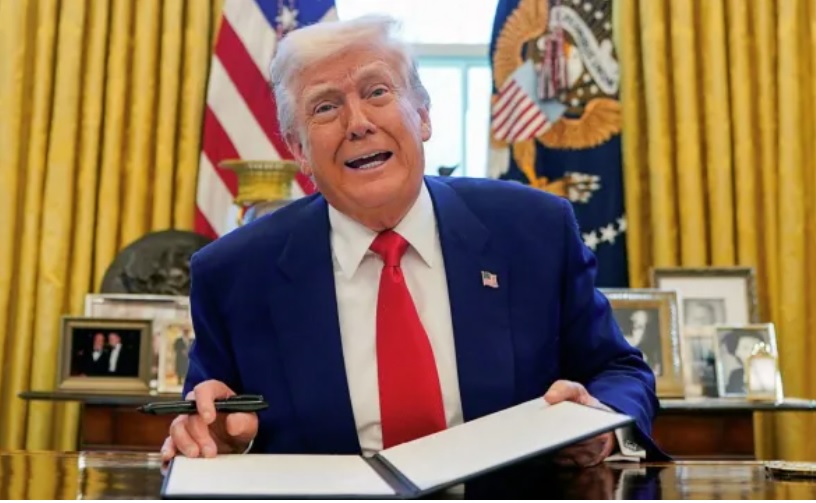Will the high US tariffs stick?
Financial markets seem to be assuming that high US tariffs won’t stick. That continued delay in their implementation combined with progress in tariff-reducing trade deals will lower the US’s effective tariff rate considerably.

Steven Barrow, Head of Standard Bank G10 Strategy, thinks the above thinking is a false assumption. There are a number of reasons why he takes this view. One is that the US government needs tariff revenues. Another is that there is a false premise to the ‘unfairness’ of trade, as claimed by the Trump Administration and hence countries are not in a position to offer significant concessions. And a third, and related reason is that many just might not trust the Trump administration to uphold any deal agreed.
On the first of these, the US President has boasted that tariffs will pull in huge revenues. A figure of USD2bn per day was quoted by Trump back in April. While that’s wildly optimistic, it is obvious that if tariffs are cut back to nothing the US will receive no revenues. A 10% effective tariff could raise around half of the USD3.4tr increase in debt over the coming decade that is projected by the non-partisan Congressional Budget Office (CBO) to result from Trump’s one big, beautiful bill that passed into law last week.
The importance of raising revenue can be seen in one of the only three ‘deals’ struck so far. For the deal with the UK saw no reduction in the 10% tariff that Trump imposed on liberation day in early April. Of course, the UK has won some concessions in product-specific tariffs, like autos and steel but, at the end of the day, the tariff bill will still be a lot bigger than the one in place before Trump took office – and don’t forget that the UK does not have a huge trade surplus in goods with the US. Instead, trade is basically in balance, and yet the effective tariff rate has increased markedly.
A second reason for pessimism about any steep reduction in tariffs lies in the fact that many countries have little to offer because they do not have the ‘unfair’ trade practices that Trump cites. For instance, if we take the EU, Trump cites VAT as a tax on the US. But it is not; it is a tax levied on domestic firms as well. In short, there is no discrimination, and the EU won’t cut it to win a lower tariff rate. Another US complaint in terms of non-tariff barriers relates to product standards.
In short, the US complaint is that the EU has higher standards, in areas such as agriculture, than the US. But these standards apply to all, meaning domestic producers and all other countries; and the EU is not going to lower standards to win a trade deal.
In addition, there is a third factor that, as well as being unable to offer much to win a trade deal, foreign policymakers will be wary that Trump tears up trade deals, as he has done with the USMCA (the trade deal with Canada and Mexico). Hence, making big concessions to lower the tariff rate might just prove a waste of time anyway. And besides, policymakers might not want to overcommit if they feel that the next US administration could reverse many of Trump’s policies.
To this list, Steven Barrow added the fact that Trump wants punitive tariffs in place so that it encourages, or forces firms to relocate to the US. The threat of tariffs of up to 200% on pharmaceuticals is just the tip of the iceberg on this one. A low tariff rate might not spark such movement but a 200% rate is almost bound to make all those US pharmaceutical countries producing in low-tax jurisdictions, like Ireland, rethink their strategy.
Of course, this could create problems if firms relocate to the US, as their demand for workers could prove a burden at a time of full employment and when the Trump Administration is sending undocumented migrants back home. The cost could be higher inflation, just as it could be from the tariffs themselves and the dislocation in supply chains if US firms shift supply lines to countries with lower tariff rates.
Despite these risks, Steven Barrow doubts that the Trump Administration will change tack. The April 9th decision to delay high-rate tariffs for three-months was not a sign of altruism but a response to imploding US assets, notably treasuries. Now that the bad news is in the price, the Administration will expect that tariffs can be hiked again to prior levels without such significant financial market fallout. This assumption could be tested.








